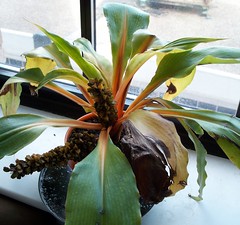Here are some benefits and advantages of using organic hydroponic gardening.
1. The hydroponic gardener doesn't need to worry about watering.
2. As long as the organic fertilizers are added to the water in the right amounts, the concentration should not hurt the roots, so you also don't need to worry about over-feeding, as long as you follow the proper schedule.
| The hydroponic garden of Howard M. Resh. (Photo credit: Wikipedia) |
4. Less space is needed to accommodate and attend to more plants than could be sustained on a similar patch of soil.
5. Hydroponics gardening helps gardeners conserve time and effort. It relieves many forms of labor needed for traditional soil-based gardening, such as keeping the soil wet, sowing, weeding the soil, and nurturing the soil.
6. Unlike in traditional agriculture, plants can be grown closer together because the roots of the plants are smaller in contrast to a larger plant or crop than they would be if grown in soil.
7. A farmer or gardener can practice multiple cropping for he can harvest and plant the crops at the same time, thus increasing harvest over traditional gardening methods.
8. He may also be able to grow larger and healthier plants because the organic fertilizer is supplied directly to the roots of the plants.
For more on organic gardening with hydroponics, check out How to Grow Fruits, Vegetables & Houseplants Without Soil: The Secrets of Hydroponic Gardening Revealed.








